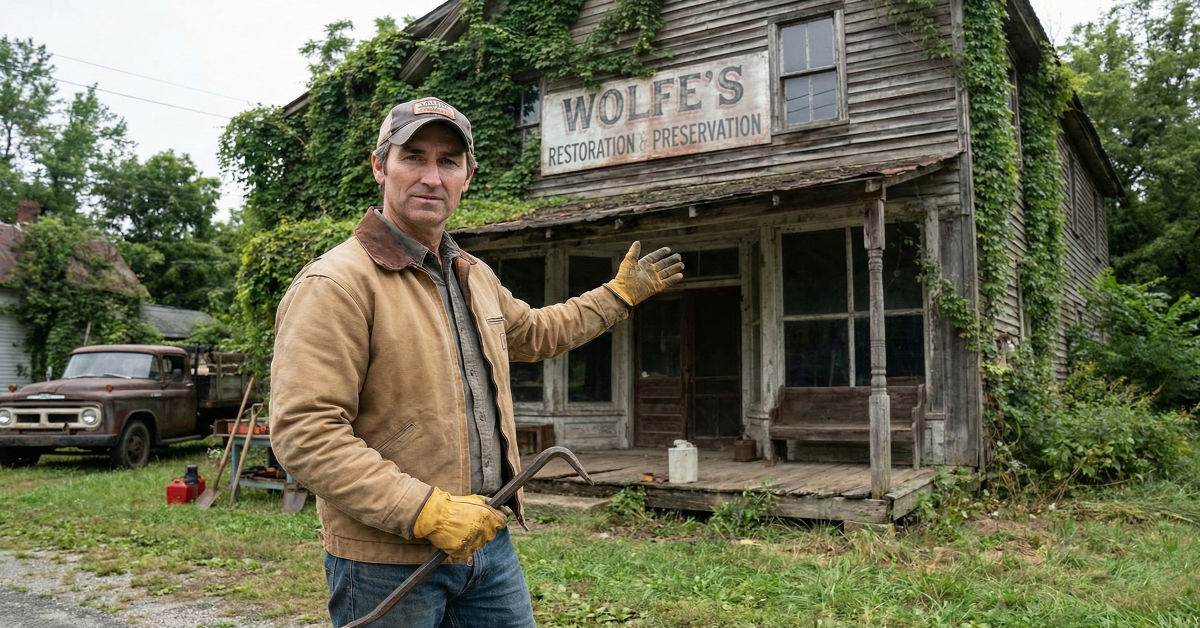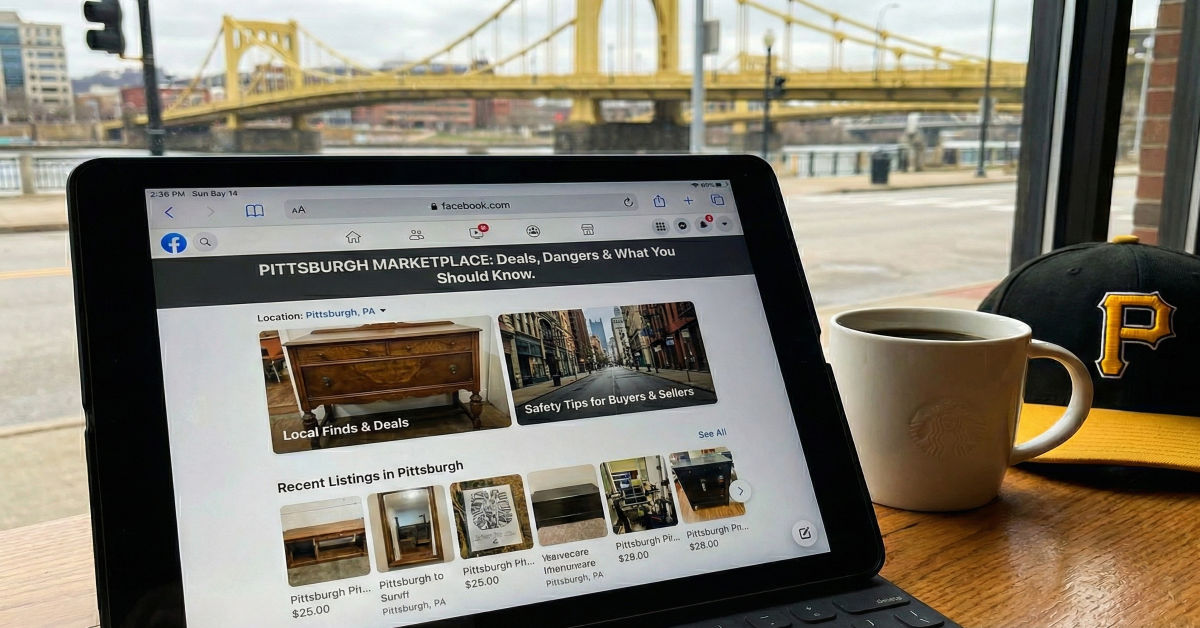When fans of Mike Wolfe think of his work, it’s often the thrill of dusty barns, rusted motorcycles or vintage signage — the kinds of relics that fuel American Pickers. But over the past decade, Wolfe’s vision has evolved far beyond collecting objects. The Mike Wolfe Passion Project represents a mission to preserve entire landscapes of Americana — restoring buildings, uplifting small towns, and championing craftspeople whose skills might otherwise vanish.
What began as a pastime has grown into a movement with tangible impact, reshaping how Americans think about antiques, architecture, and community. Rather than simply collecting items, Wolfe sees potential in every building, sign and object, turning neglected relics into active spaces for commerce, craft, and connection. For Wolfe, it’s not just about saving things — it’s about saving meaning.
The project combines preservation, storytelling, and community revitalization, emphasizing the value of heritage in modern life. In this article, we explore the origins, methods, challenges, and broader implications of Wolfe’s work, offering insight into why one man’s passion can reshape towns and preserve the fabric of everyday history.
From Barns to Blueprints: Origins of the Passion Project
Wolfe’s fascination with abandoned buildings and forgotten objects began in his youth in Iowa. As a boy, he pedaled along rural roads, captivated by the oddities and remnants of a vanishing past. Over decades, this curiosity matured into a mission: to preserve not just objects, but the stories, architecture, and lives connected to them.
Television fame via American Pickers, which premiered in 2010, introduced Wolfe to a national audience and created a platform for his deeper ambitions. While the show focused on collecting antiques and collectibles, Wolfe increasingly saw the potential to restore entire buildings and repurpose them for community use.
By the early 2010s, Wolfe began acquiring historic buildings — from defunct gas stations to empty warehouses — with the goal of restoring and reimagining them. This marked the formal beginning of the Mike Wolfe Passion Project: a commitment to architectural restoration, craft preservation, and community revitalization.
What the Passion Project Looks Like
The project unites three key dimensions: architecture and place, craft and storytelling, and community and economy.
Architecture & Place: Saving More Than Buildings
Wolfe acquires properties with character and historical significance, often located in small towns or overlooked downtown districts. Restorations preserve original features such as beadboard walls, tin ceilings, and vintage signage while converting spaces into functional venues — shops, guesthouses, studios, and community hubs.
In Columbia, Tennessee, Wolfe restored multiple historic buildings, transforming a former gas station into a gathering space and revitalizing downtown storefronts into operational businesses. In LeClaire, Iowa, his hometown, the downtown revitalization linked heritage tourism with local economic growth, demonstrating how preservation can generate tangible community benefits.
Craft & Storytelling: Living History
Objects and buildings in the Passion Project are treated as vessels of narrative. Through Wolfe’s platform, Two Lanes, he documents road trips to neglected towns, photographs historic sites, and writes essays on the people and stories behind artifacts.
Supporting small-scale artisans is also central. Wolfe provides grants and exposure to craftspeople specializing in woodworking, metalworking, and signage. His philosophy frames these crafts not as nostalgic relics but as living, relevant skills, ensuring the continuity of American craftsmanship.
Community & Economy: Revival Beyond Restoration
The project transforms abandoned buildings into productive spaces, supporting tourism, business, and local employment. In Columbia, Wolfe’s investments revived historic structures and generated community activity, while simultaneously drawing visitors interested in heritage, craft, and Americana.
By combining commerce with preservation, the project strengthens local economies and fosters a renewed sense of place. Heritage becomes a tool for sustainable revitalization, rather than merely a cultural artifact.
Comparing Traditional Picking vs. the Passion Project
| Dimension | Key Activities | Intended Impact | ||
| Architecture & Place | Restore historic buildings | Preserve heritage, prevent decay | ||
| Craft & Storytelling | Curate artifacts; document stories; support artisans | Sustain skills, contextualize objects | ||
| Community & Economy | Convert buildings into functional spaces | Economic revitalization, tourism, community engagement | ||
Real-World Examples
In Columbia, Tennessee, Wolfe purchased and restored several derelict buildings, including a former Esso gas station transformed into a communal gathering space with fire pits, seating, and a stage. Similarly, a historic 1873 Italianate home underwent extensive restoration to preserve architectural details while making it functional for modern use.
In LeClaire, Iowa, Antique Archaeology serves as both a retail destination and heritage hub, linking commerce with storytelling. Objects and buildings come alive with context, offering visitors immersive experiences into American history, culture, and craftsmanship.
Expert Perspectives
“Wolfe’s early interest reveals how material culture can reflect community identity, memory, and change,” says historian Hannah Rowe, emphasizing the narrative power of artifacts.
Architectural historian Susan Halbrook notes, “Celebrity engagement in heritage preservation can convert attention into resources, but must respect local context and history.”
Another analyst highlights that Wolfe’s projects exemplify sustainable rural revitalization, blending commerce with preservation to benefit communities struggling with decline.
Challenges and Critiques
Restoration is costly and complex, with structural, regulatory, and financial risks. Critics caution that celebrity-driven projects might overshadow local voices or unintentionally commodify heritage.
However, supporters argue Wolfe balances preservation with practical impact. Revived buildings serve real community needs while maintaining historical integrity, providing a model for blending cultural and economic objectives.
Significance in Contemporary Context
In an era of urban migration and cultural homogenization, the Mike Wolfe Passion Project illustrates a proactive approach to heritage preservation. By rescuing old buildings and reviving local crafts, Wolfe offers a vision of progress that respects history and cultivates sustainable communities.
The project underscores the importance of authenticity, storytelling, and rootedness. Heritage tourism, craft support, and functional adaptive reuse ensure that preservation is not nostalgic ornamentation but a living, integrated part of modern life.
Takeaways
- Reframes picking from object collection to preserving communities and stories.
- Adaptive reuse of buildings preserves heritage and stimulates local economies.
- Storytelling contextualizes artifacts, preserving human narratives.
- Artisan support sustains traditional American crafts.
- Combines heritage preservation with economic revitalization.
- Celebrity-driven projects carry risks but can generate meaningful impact.
- Demonstrates a model for rural revitalization that honors history while serving contemporary needs.
Conclusion
The Mike Wolfe Passion Project redefines what it means to preserve history. By converting derelict buildings into functional spaces and sustaining craft traditions, Wolfe ensures that heritage remains a living, integrated part of modern life. Communities once neglected gain economic, social, and cultural vibrancy, illustrating that preservation and progress can coexist.
In a world dominated by speed and disposability, Wolfe’s approach champions slowness, care, and rootedness. His work demonstrates that remembering the past need not impede the future — it can enrich it, offering lessons in resilience, identity, and continuity for communities and individuals alike.
FAQs
What is the Mike Wolfe Passion Project?
It’s Wolfe’s initiative to restore historic buildings, preserve Americana artifacts, document stories, and revitalize small towns.
Where are the main projects located?
Columbia, Tennessee, and LeClaire, Iowa, are central, featuring restored storefronts, homes, and community spaces.
How does it differ from American Pickers?
Unlike the show’s resale focus, the Passion Project emphasizes preservation, storytelling, and community revitalization.
Does the project boost local economies?
Yes. Restored buildings create businesses, attract tourists, and generate jobs in small towns.
Are there criticisms?
Concerns include gentrification and the complexity of restoration, but supporters highlight practical community benefits.











